This page is a detailed description of the line to read before or during your journey. It covers a mix of railway history, local history and information about the scenery you will pass.
Route: Inverness – Beauly – Muir of Ord – Dingwall – Garve – Achnasheen – Achnashellach – Strathcarron – Attadale – Stromeferry – Duncraig – Plockton – Kyle of Lochalsh
Trip Length: 2 hours 40 minutes
Inverness is known as the capital of the Highlands. It retains its original, although much modernised, railway station situated next door to the former Highland Railway hotel.
The station has an unusual shape with lines going north, east and south from this terminus.
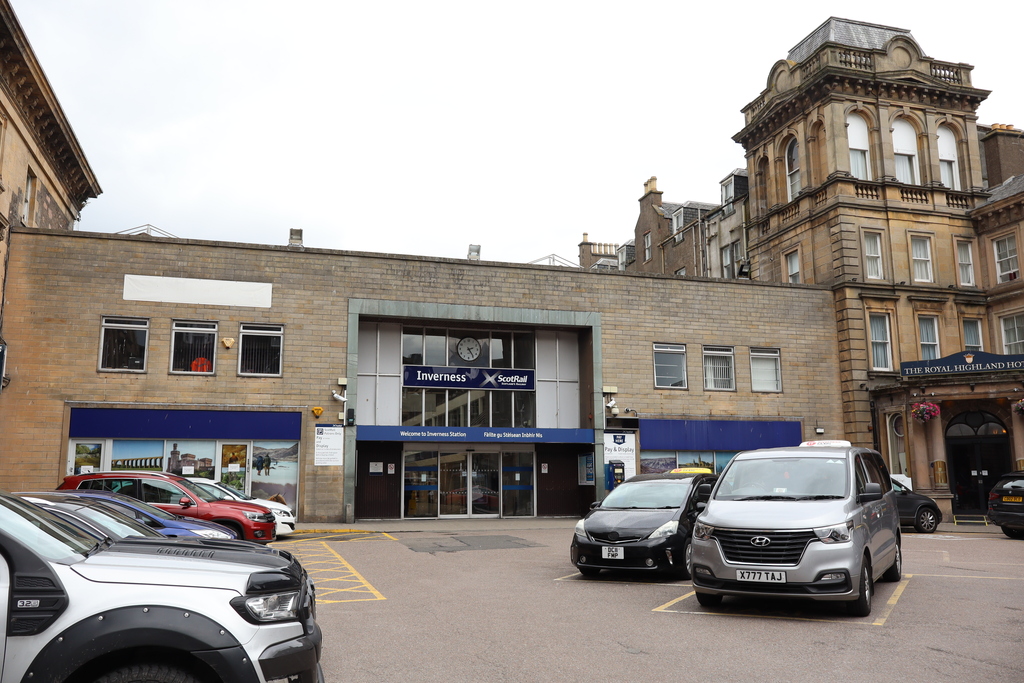
Inverness train station was opened in 1855
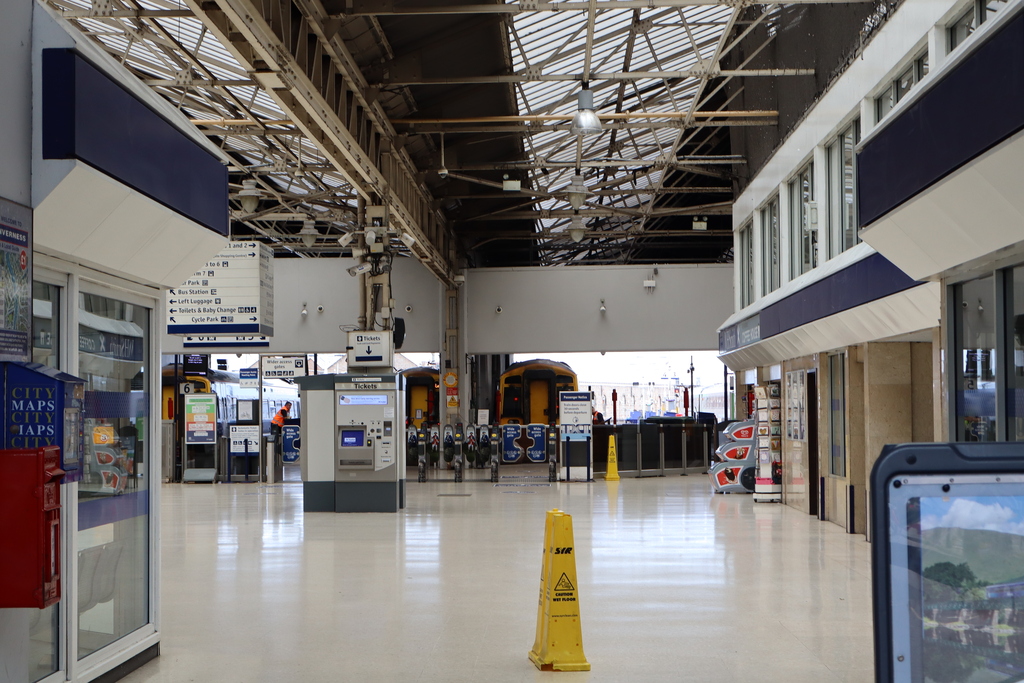
Inverness train station has a waiting room, ticket office, shop and refreshments
On leaving Inverness station, trains head north-west and across the River Ness. The modern bridge is a replacement for the original stone structure which was brought down during a flood in 1989.
During that time the terminus of the railway was moved to Muir of Ord with buses provided between there and Inverness.
The train quickly makes its way through the town and slows to cross the northern end of the Caledonian Canal.
Along with other bridges over the canal, this is a swing bridge and the small signal box to your left alongside the canal operates the bridge when ships require through.
The train now makes its way along the shoreline of the Moray and Beauly Firths. Passengers gain excellent views of the Firth and the Black Isle on the opposite shore.
To the left of the train in the distance is Ben Wyvis, the highest hill in the area and often snow covered even well into the spring time.
Crossing the River Beauly the train slows for its first stop in the village of Beauly.
Beauly is an attractive village which regained its railway station in 2002. The original station was closed and converted into a house.
The new station is at the west end of the village and occupies part of the former station area. It has the shortest platform in the UK at 15.06 metres (49 feet 4 inches) with space for one carriage.
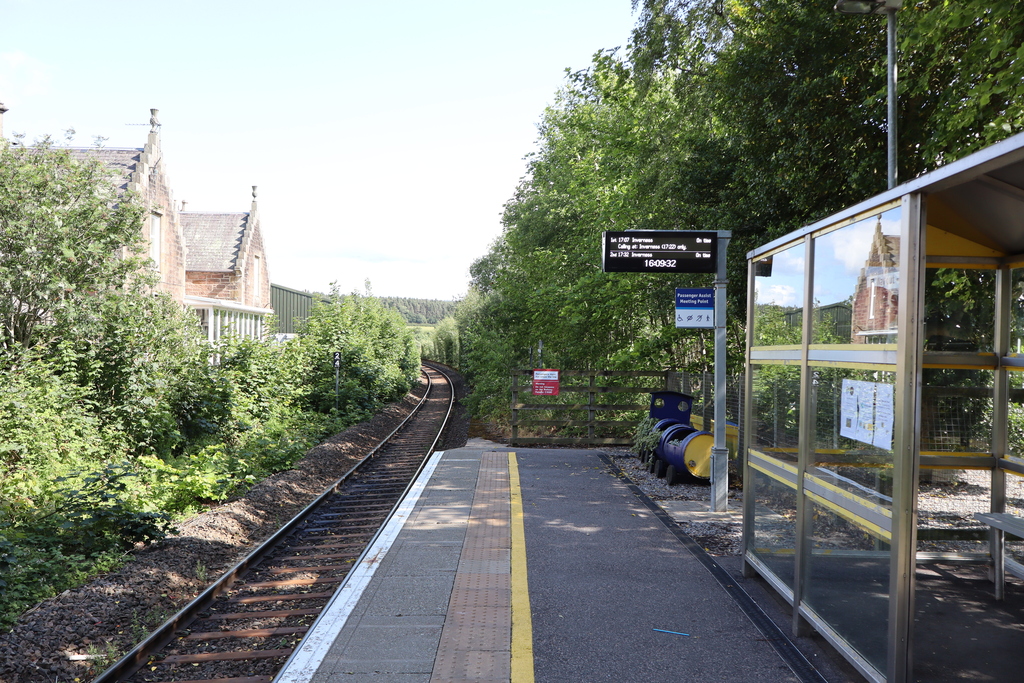
Looking south from Beauly railway station
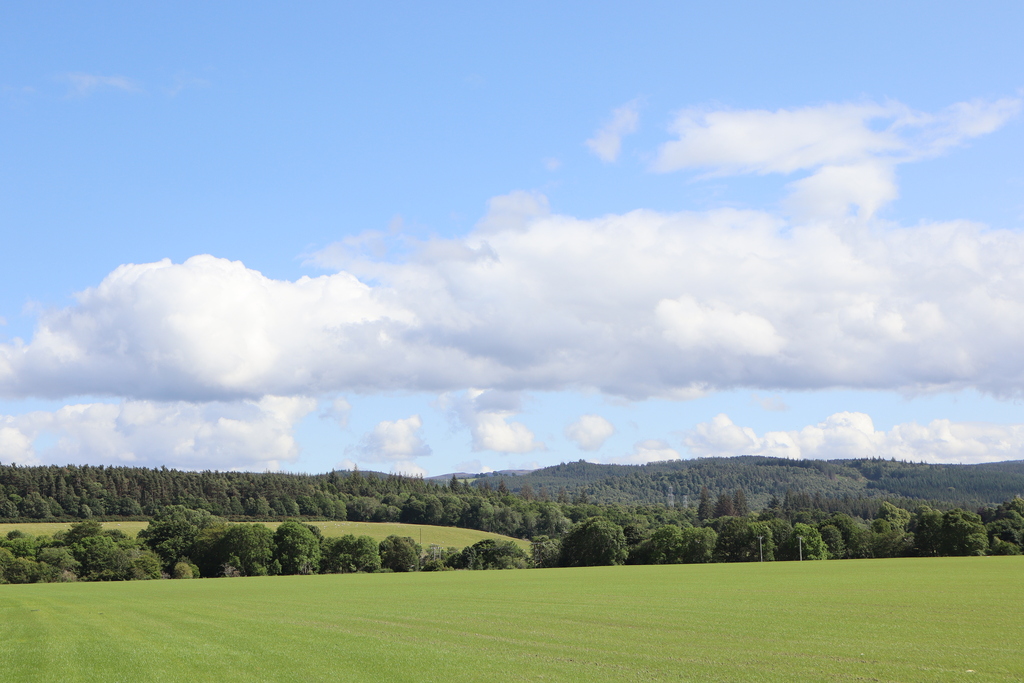
View from the station car park
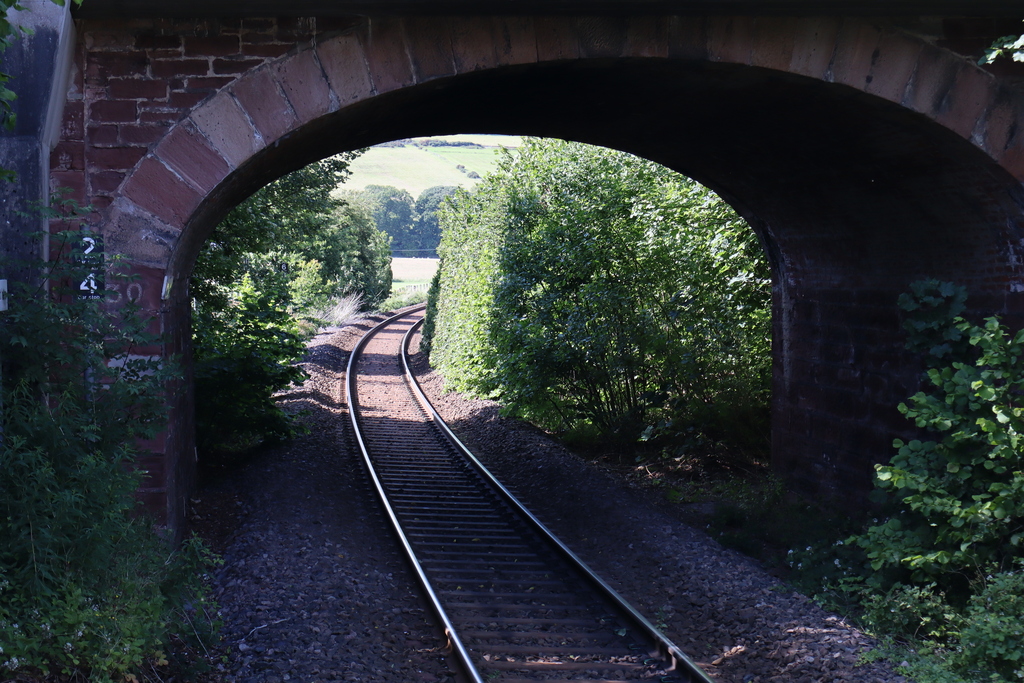
Looking north from the station
There is then a short journey on through farmland to Muir of Ord. This was formerly the junction for the branch line to Fortrose on the Black Isle, of which nothing now remains in the town.
Today those wishing to visit the Black Isle take a bus from Inverness.
Available soon! See our guide to the bus trip from Inverness to the Black Isle.
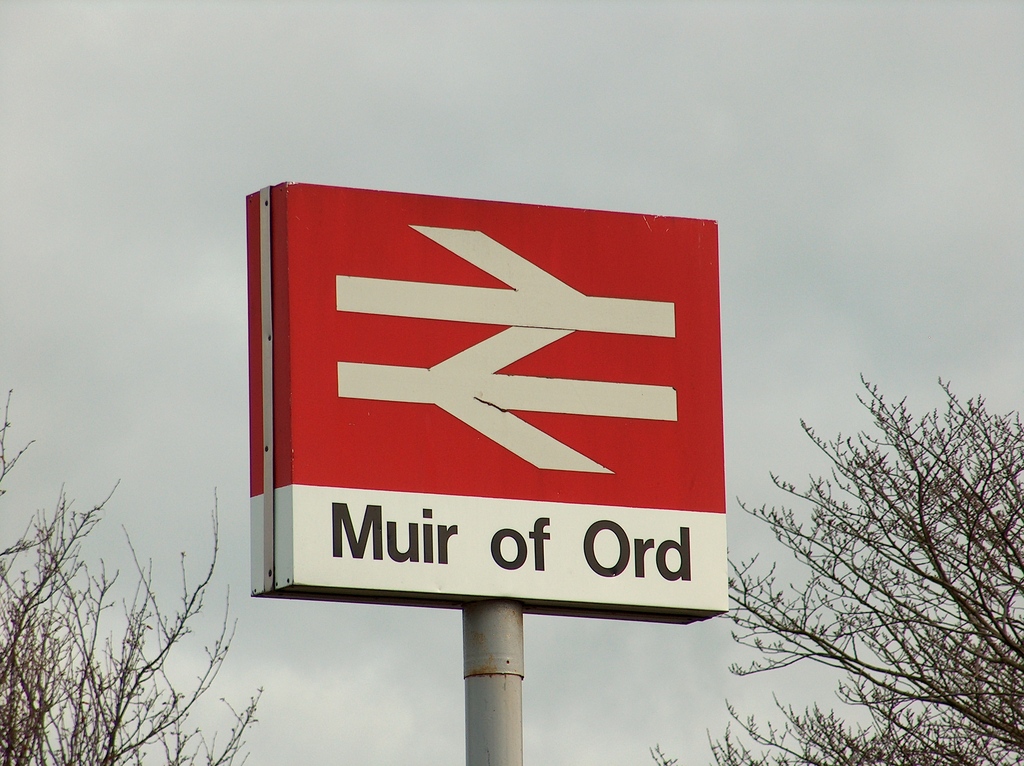
This is all we've got!
The train has views of Ben Wyvis again and then follows the River Conon for a short section, stopping at Conon Bridge.
This is an attractive small village which regained its railway station in 2013 and has the second shortest platform in the UK at 15.08m (49 feet 5 inches).
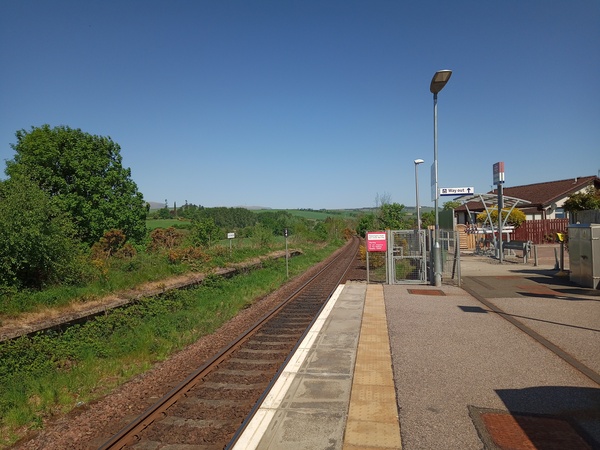
Conon Bridge railway station
Next the train crosses on an attractive stone bridge then heads through the village of Maryburgh before arrival in the market town of Dingwall.
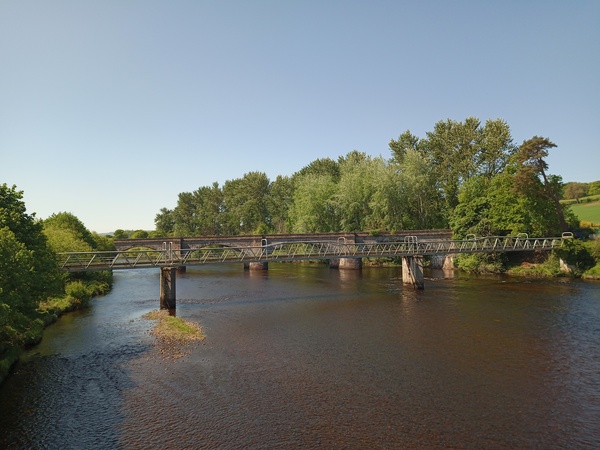
Railway bridge over River Conon
Dingwall is the largest town along the line. Arrival is into the original 1862 station built by the Highland Railway. The attractive building is constructed from red sandstone.
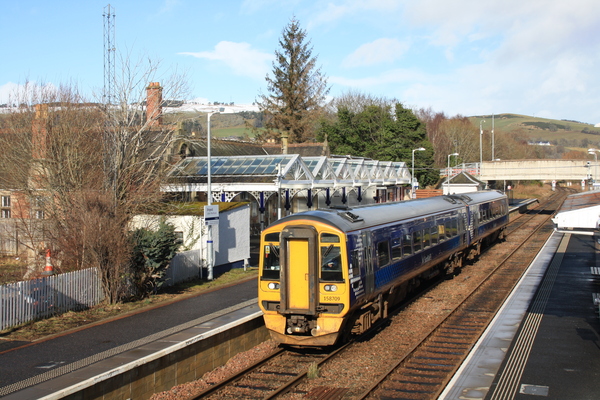
Dingwall Railway Station in winter - see the snow on the hills
The train departs Dingwall station and makes its way through town and across three level crossings. The line quickly starts to take a westerly route and begins the long climb towards Garve.
This is a journey of mountains as well as water and the train is soon in remote and beautiful scenery. Shortly after leaving Dingwall you may catch a glimpse of the village of Strathpeffer on the left of the train as it turns to climb the valley side.
This Victorian spa town would have been the largest settlement on the line had it not been for a short-sighted landowner who refused permission for the line to cross his land.
A branch line was later built to the village but as a branch it was uneconomic and closed in the 1930s. The train makes its way along the shoreline of Loch Garve with beautiful views of the loch and the hills before the first station at Garve.
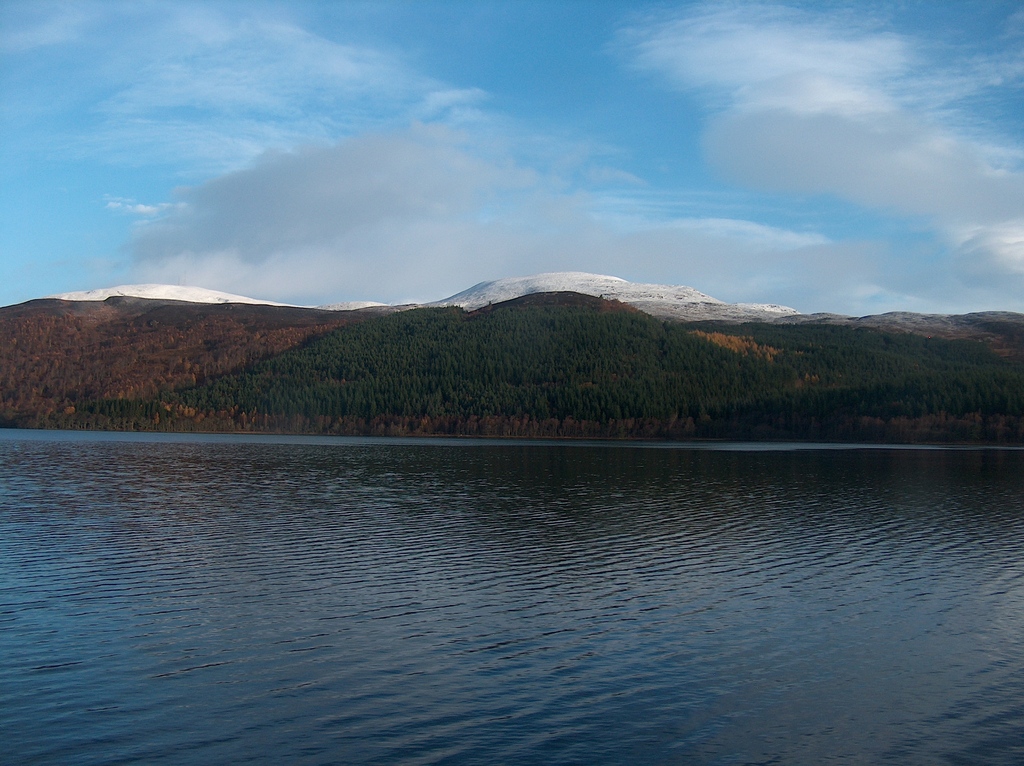
Loch Garve
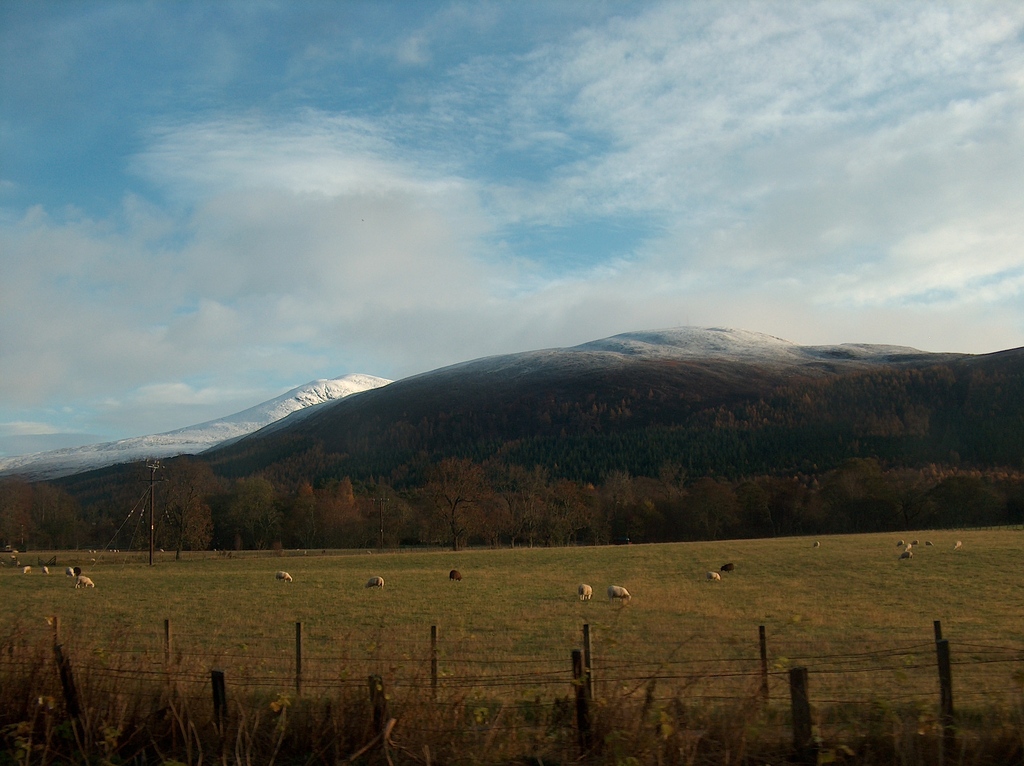
Scene approaching Garve station
On leaving Garve look to the right of the train to see views once more of Little Wyvis and Ben Wyvis (1045 metres). The train now makes its way along the banks of Loch Luichart.
This long narrow loch is picturesque with hills and trees surrounding the loch on all sides. One of the nice things about this line is that it is beautiful in all seasons.
In spring and summer, flowers, heather and trees are in full bloom. In the autumn the unique colours are no less spectacular, while winter often results in the hills being snow capped along the entire length of the route.
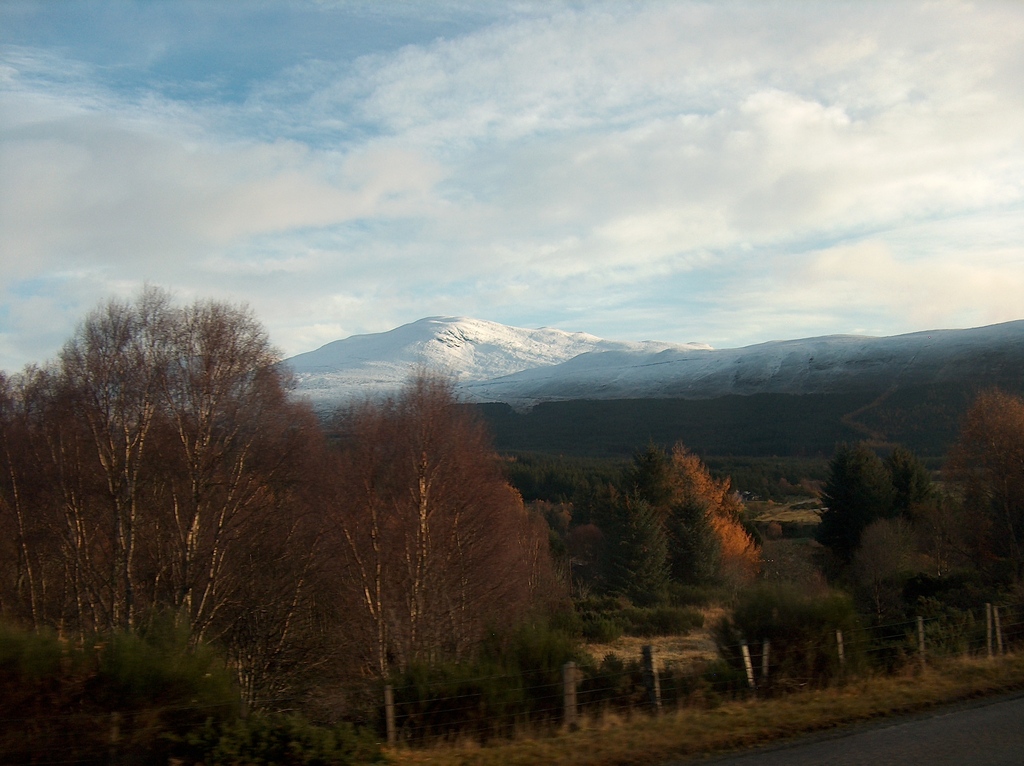
Between Garve and Lochluichart
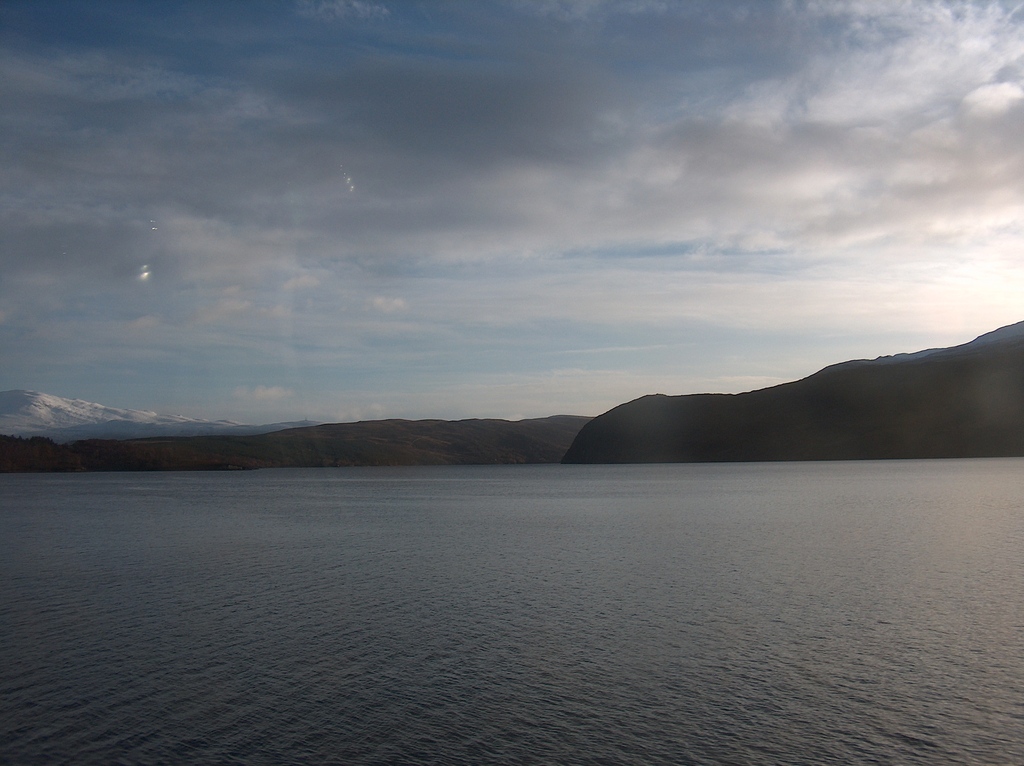
Loch Luichart
Lochluichart station is a small request stop on the banks of the Loch and next to the hydro power station. The train is in rural Highland scenery now with an abundance of wildlife including birds of prey and deer which come right up beside trains.
After Lochluichart the line rises up above Loch a' Chuilinn on the right of the train before falling to cross Loch Achanalt. This is sometimes a popular spot for train photographers to alight at the request stop Achanalt Station to see the trains pass.
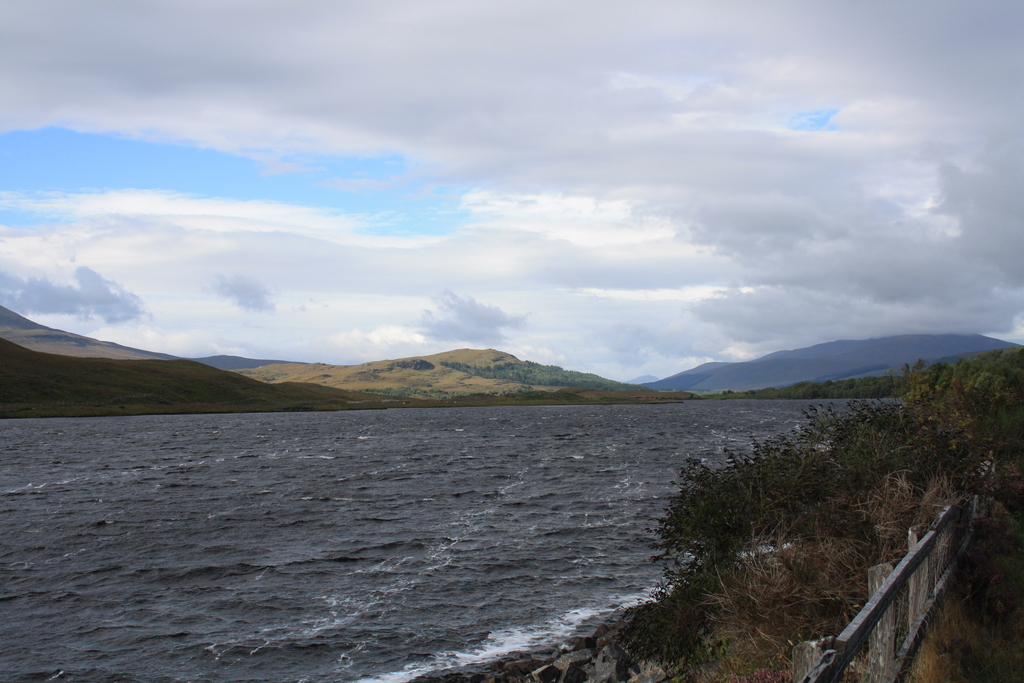
Loch a' Chuilinn from the opposite side than the train
On the left of the train are the five peaks of Sgurr a Mhuillin which are often snow covered until late spring. The train travels through the narrow Strath Bran sharing the space with the River Bran.
The valley eventually narrows so that rail, river and road share a space only a few metres wide before opening out again allowing the river to meander along the valley floor.
Early morning trains are often treated to sun rises along this open valley with big hills and an even bigger sky to enjoy. To the west you briefly see the Torridon Peaks, which provide walks for hikers and nature enthusiasts.
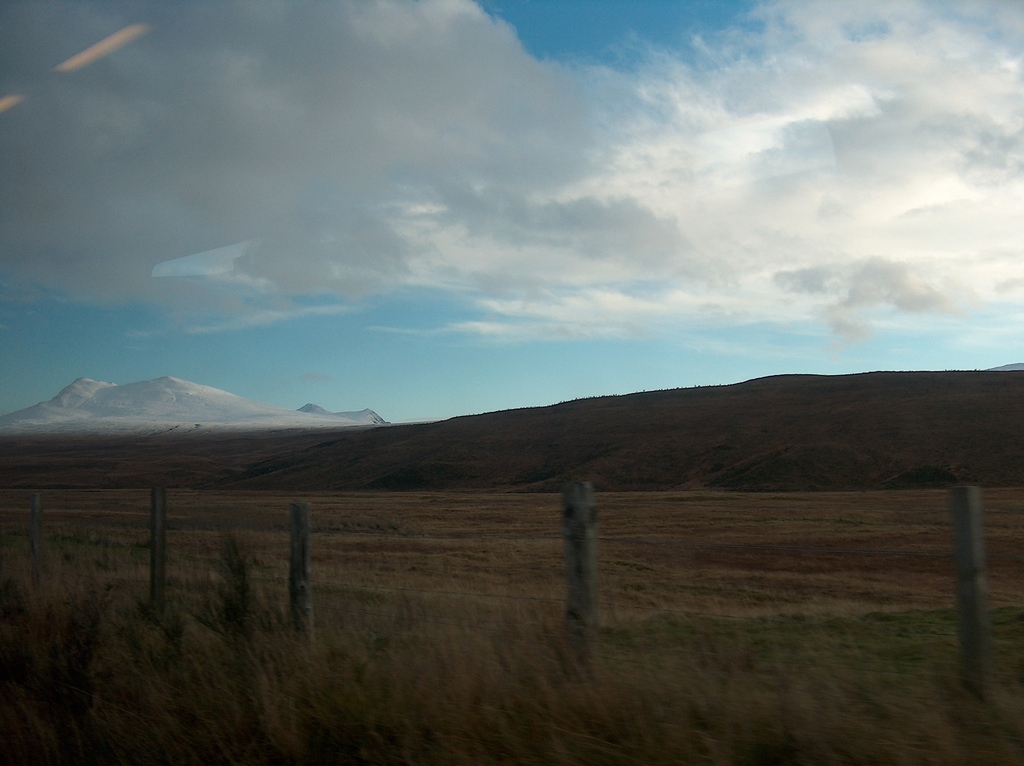
Strath Bran
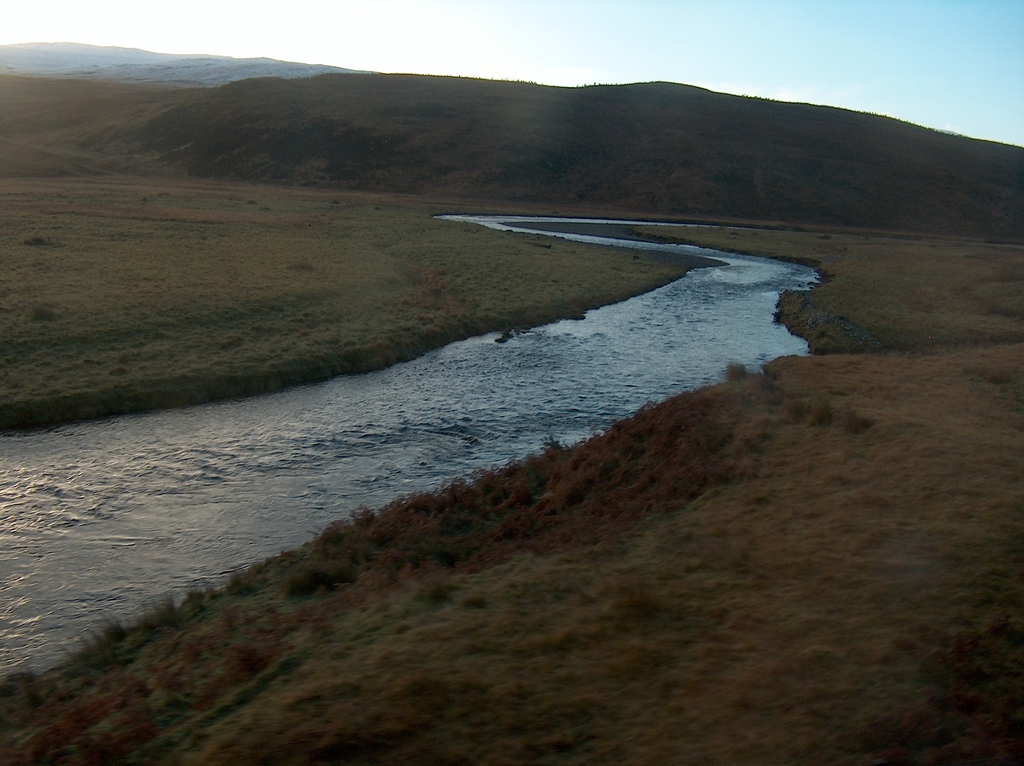
River Bran
Achnasheen was once a busy station although the building is now a house. The settlement consists of only a few houses; however, there was once a hotel here beside the station. It burnt down in the 1990s and the site was cleared.
This was also the railhead for the west coast with buses to Gairloch. With road improvements, coaches now leave from Inverness and take a different route along the Ullapool road, with rail no longer featuring on that journey.
The village and surroundings have changed little since this was a drovers’ stop where cattle driven from Glen Carron (to the south west) and Torridon, Gairloch and Poolewe areas to the north west would meet before being driven to markets at Dingwall.
The line of the old drovers’ road can still be seen about 100 feet above the main road on the north side of Loch a'Croisg (Loch Rosque) and with a little imagination you can still see what it must have been like in those days.
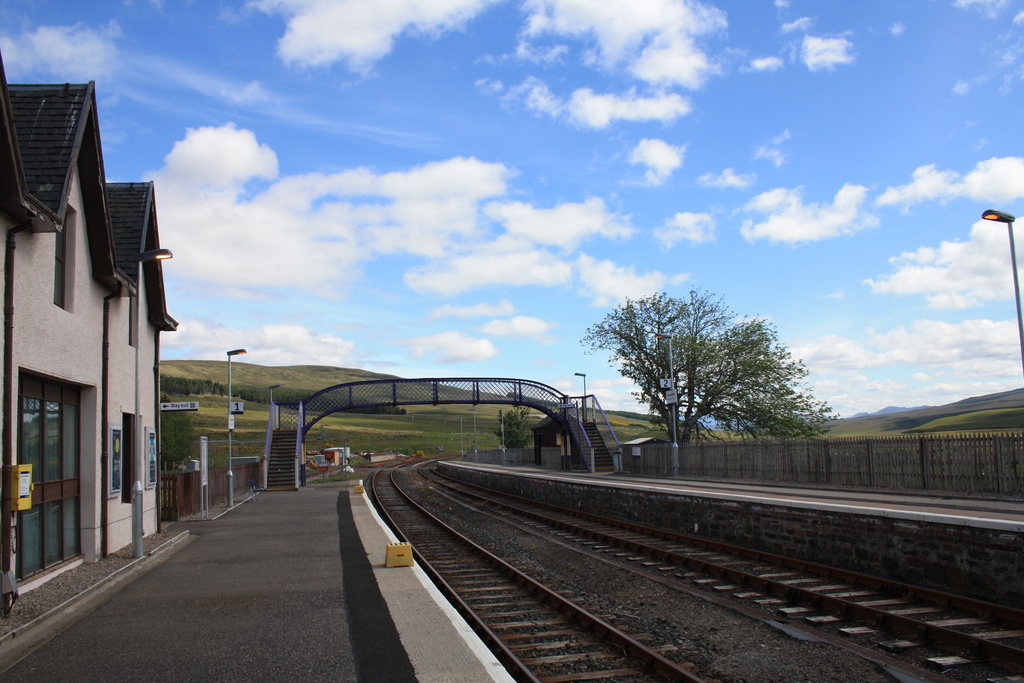
Achnasheen railway station looking east
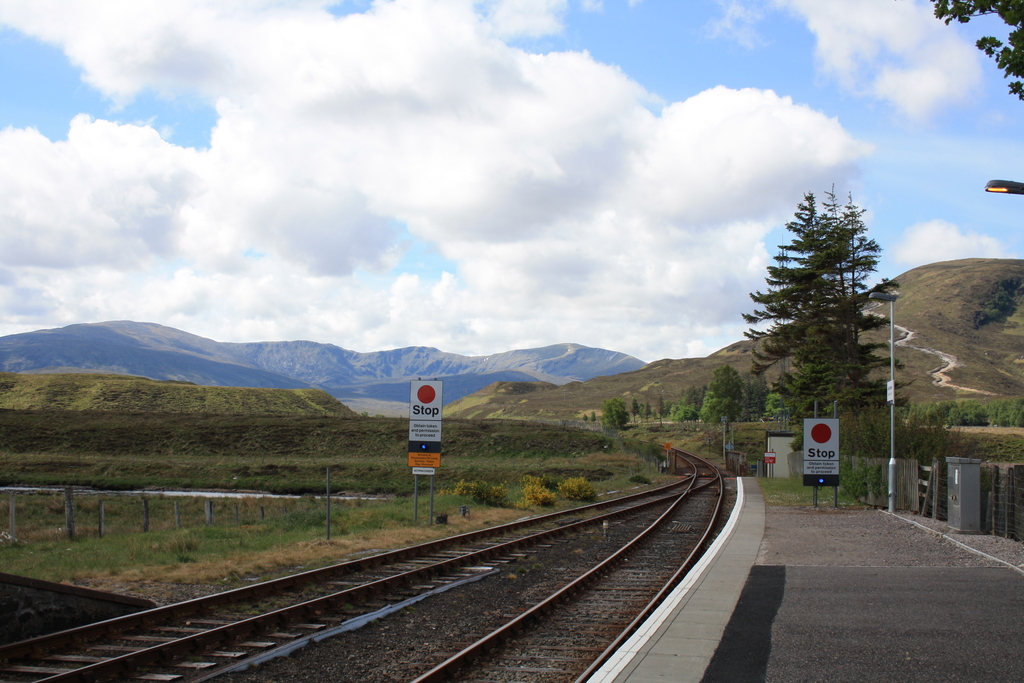
Achnasheen railway station looking west
The mountains close in again after Achnasheen and the train passes Loch Gowan and then continues up to Drumalbain watershed. From here the streams and rivers flow west rather than east.
Loch Sgamhain appears on the right as the train enters Glen Carron where the train winds its way slowly between the mountains on either side of the line.
Glencarron Lodge is also seen on the right. It is the principal house on the Glencarron estate and was once served by its own private railway station, known as the Glencarron Platform.
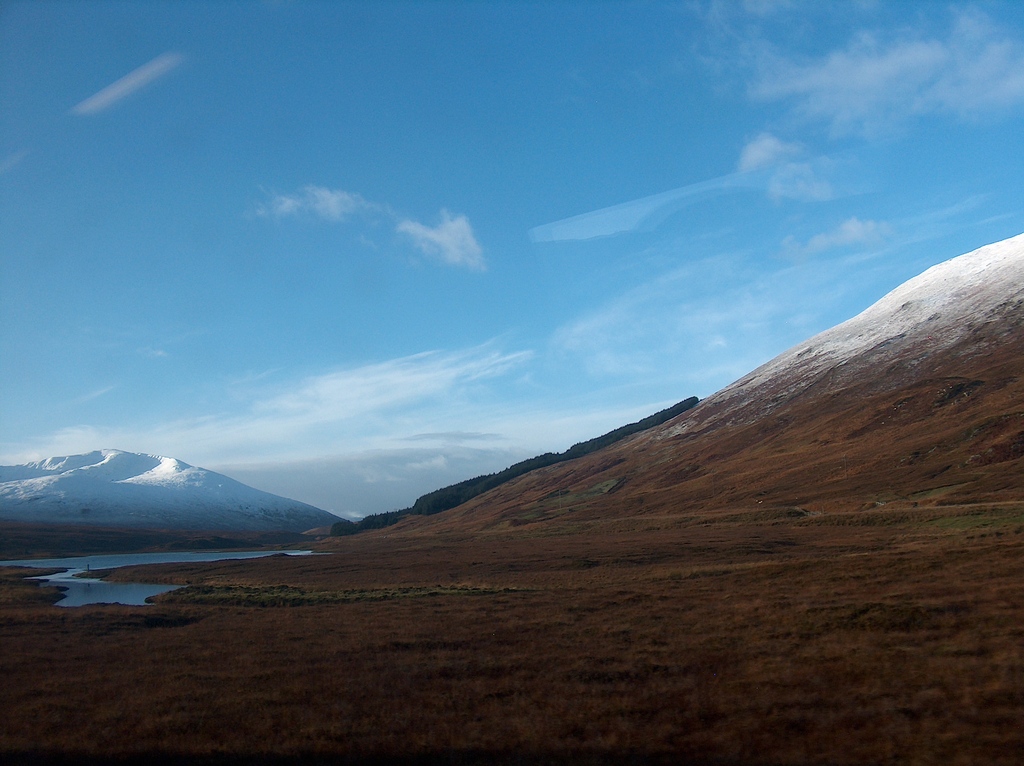
Approaching Loch Gowan
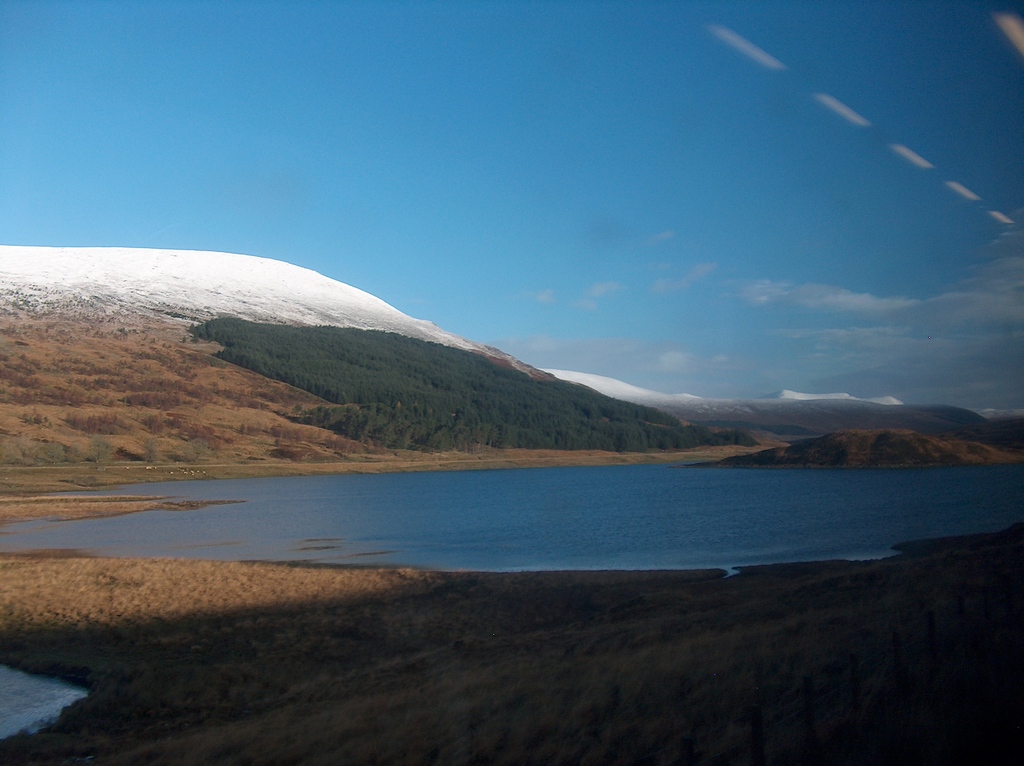
Loch Gowan
After Achnashellach Station request stop the train travels through Achnashellach forest. Little remains of the once great Caledonian pine forest, although efforts are being made to preserve these remnants.
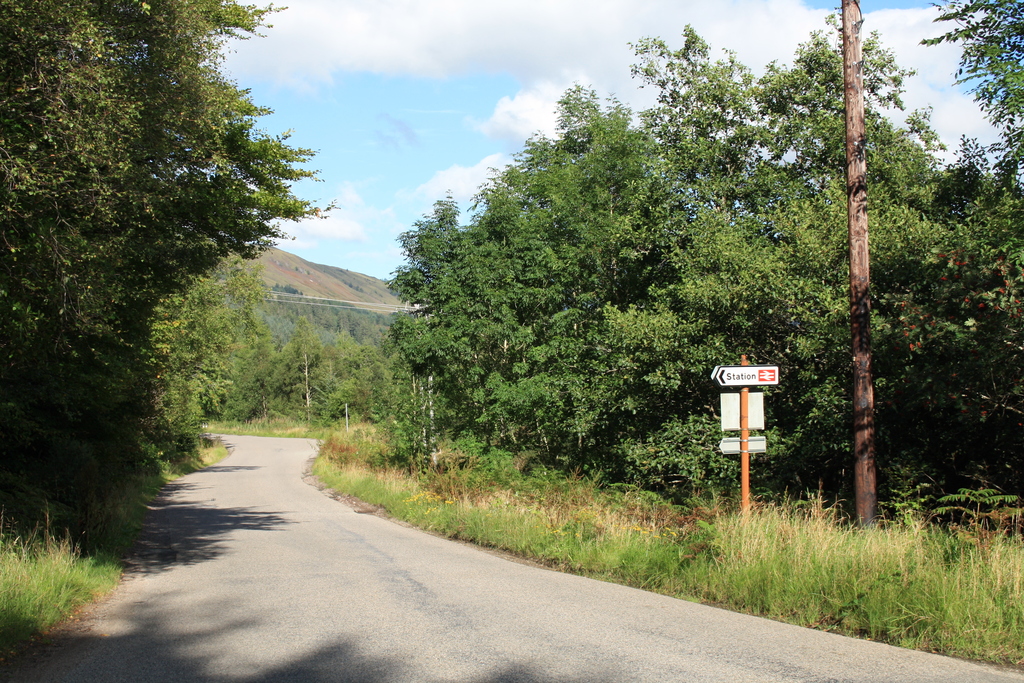
Sign to Achnashellach train station from the A890
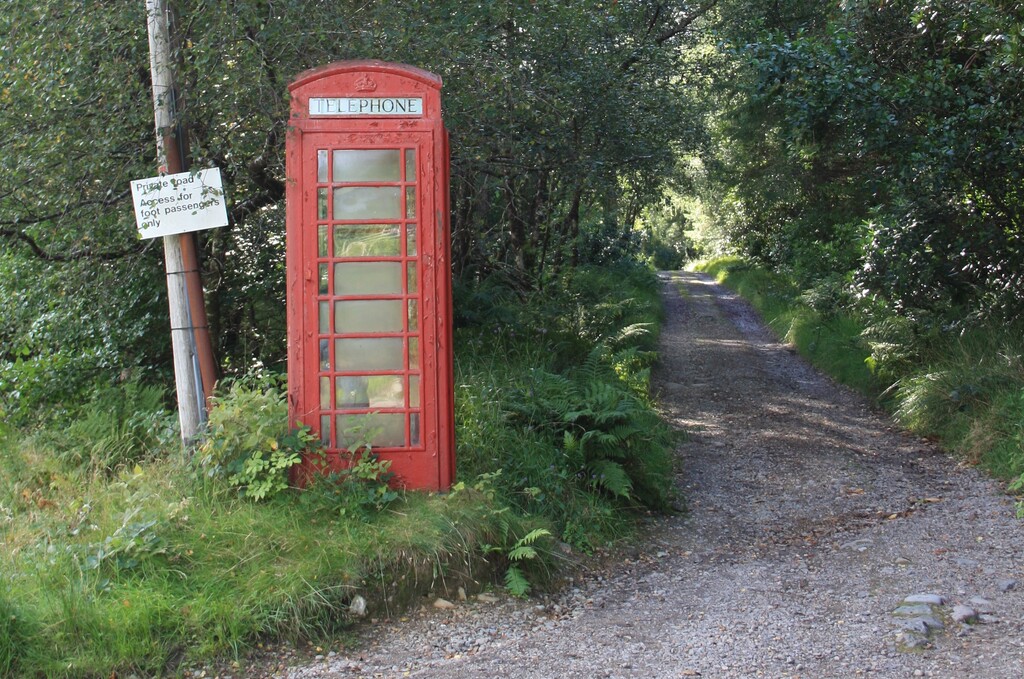
Footpath to the train station
The train continues through Glen Carron following the course of the River Carron. The hills on the left of the train are Cairn Mor at 515 metres.
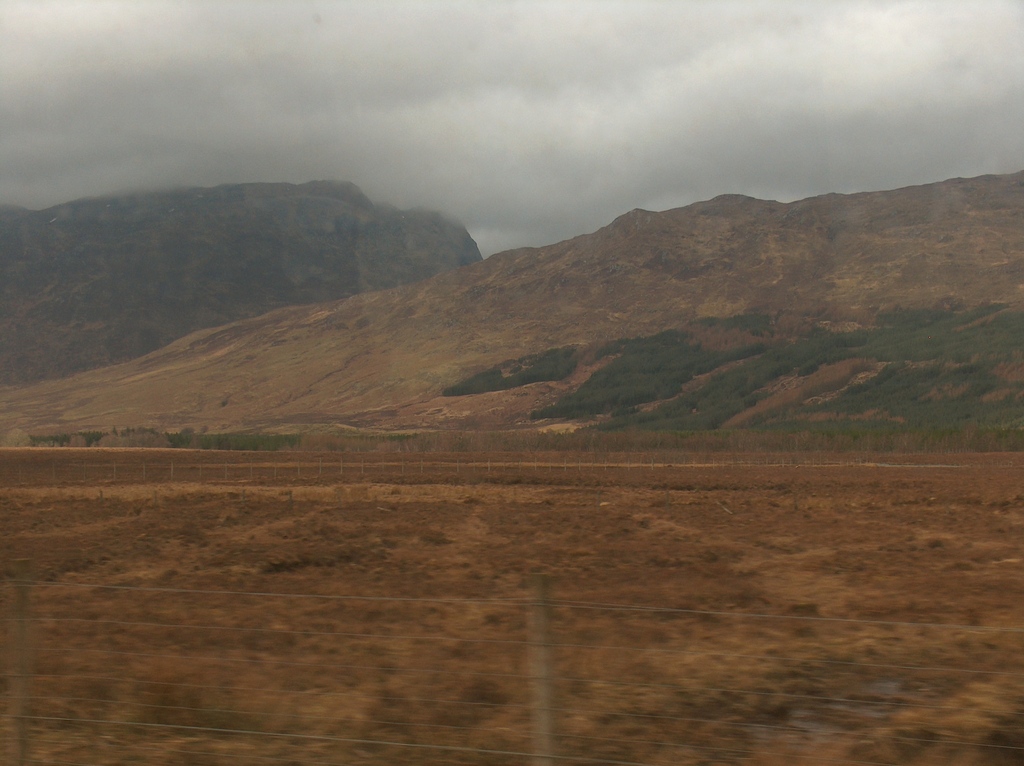
Glen Carron
The train next stops at Strathcarron Station, after which it travels alongside the waters of Loch Carron. The village named after the Loch, Lochcarron with its white cottages can be seen reflected on the water’s surface.
The journey has now dramatically changed from hills and mountains: the line now hugs the shoreline all the way to Kyle for one of the most spectacular and beautiful sections of railway in the world.
Attadale Station is a tiny request halt. The train departs Attadale and crosses the River Attadale which flows down past the Gardens.
The line winds its way along the shoreline right beside the sea loch. The hillside is so steep on the left of the train that an avalanche shelter has been built to protect trains from falling rocks and the train’s wheels squeal out with every tight curve.
The train next stops at the small village of Stromeferry which was once the terminus of this line. From here steamers left for the Island of Skye.
However, when a rival railway was opened to Mallaig (providing an alternative route to Skye), the Highland Railway pressed ahead with an extension to Kyle.
There being very little room for the railway, the builders fitted it in between the hill and the sea by blasting their way through sheer rock. This remains the route of the Skye line to this day.
This station had a revival in its fortunes in the 1970s for a few short years when a rail freight terminal to serve an oil construction yard was opened. Both yard and sidings have since gone.
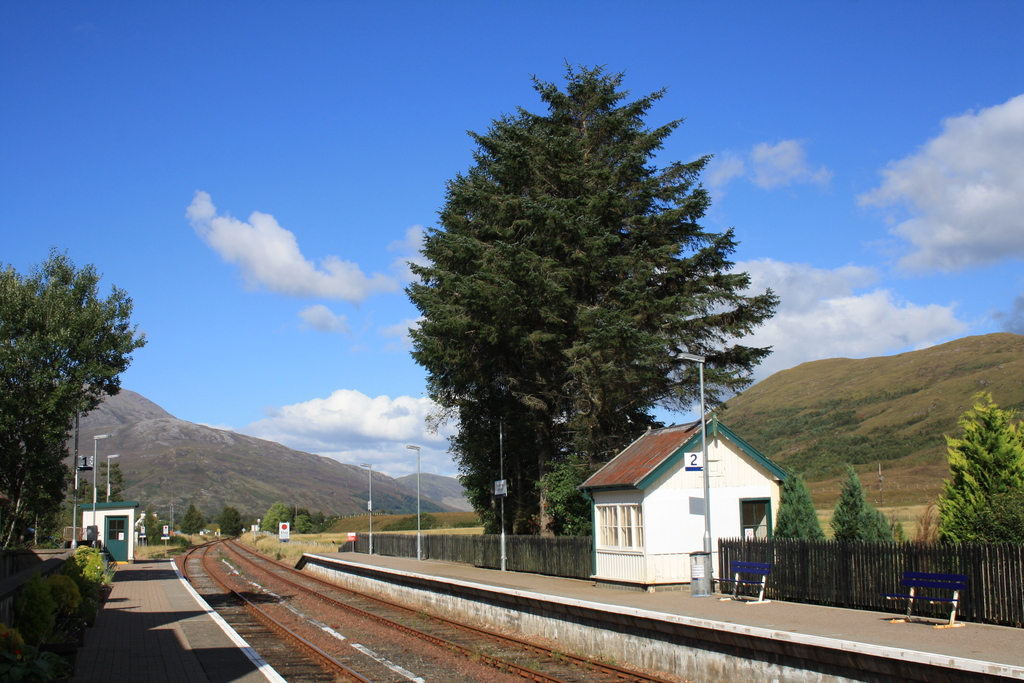
Strathcarron train station
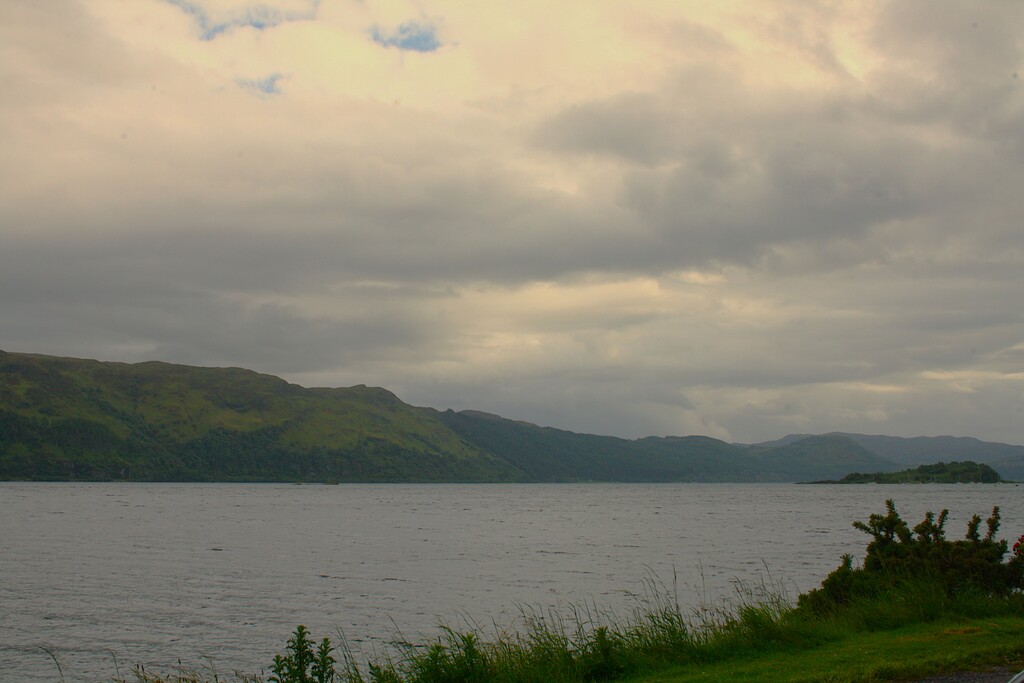
View from Lochcarron
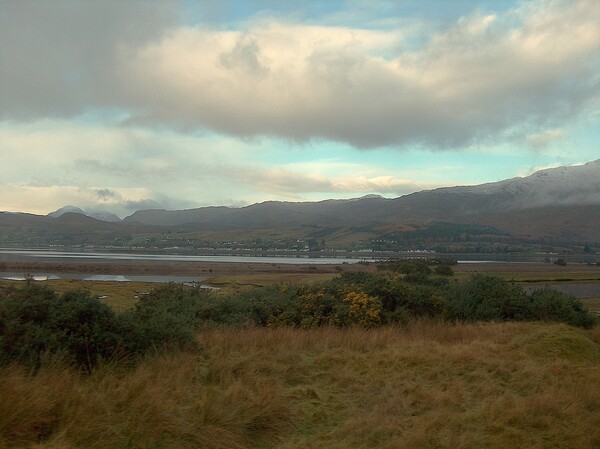
View of Lochcarron from the train
The train continues alongside Loch Carron, a sea loch which flows into the Atlantic Ocean, and will stop on request at Duncraig station.
The Loch is opening out at this point and the scenery increasing in beauty. The mild climate allows for incredible vegetation growth for a location this far north and west.
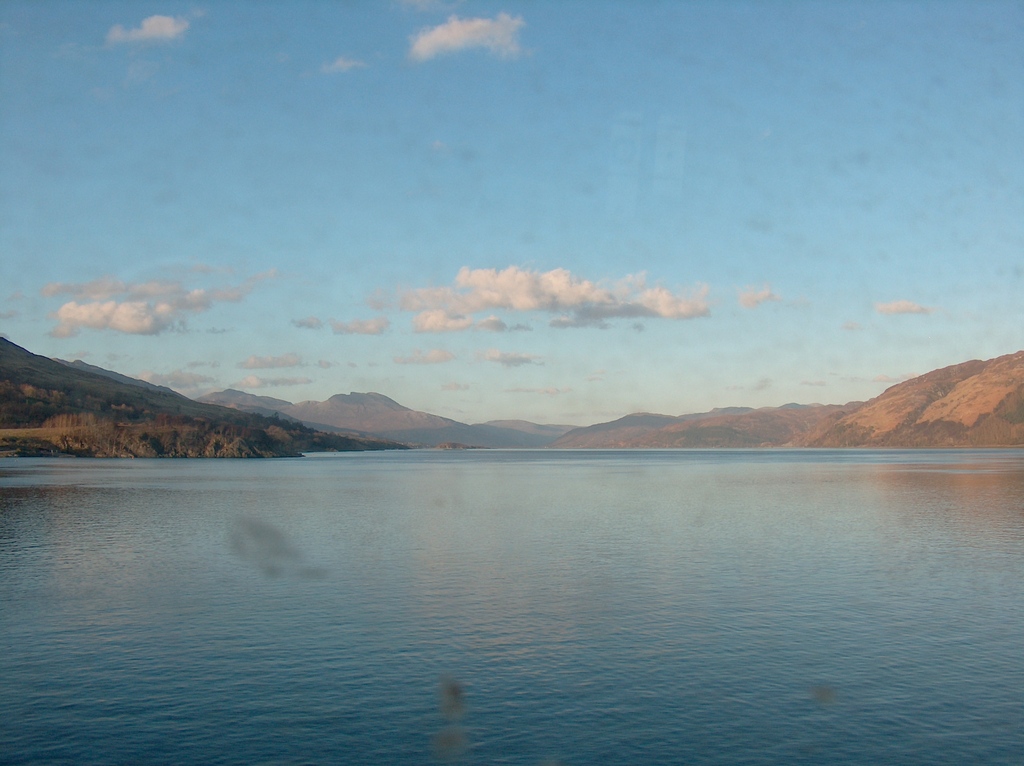
Loch Carron around Stromeferry
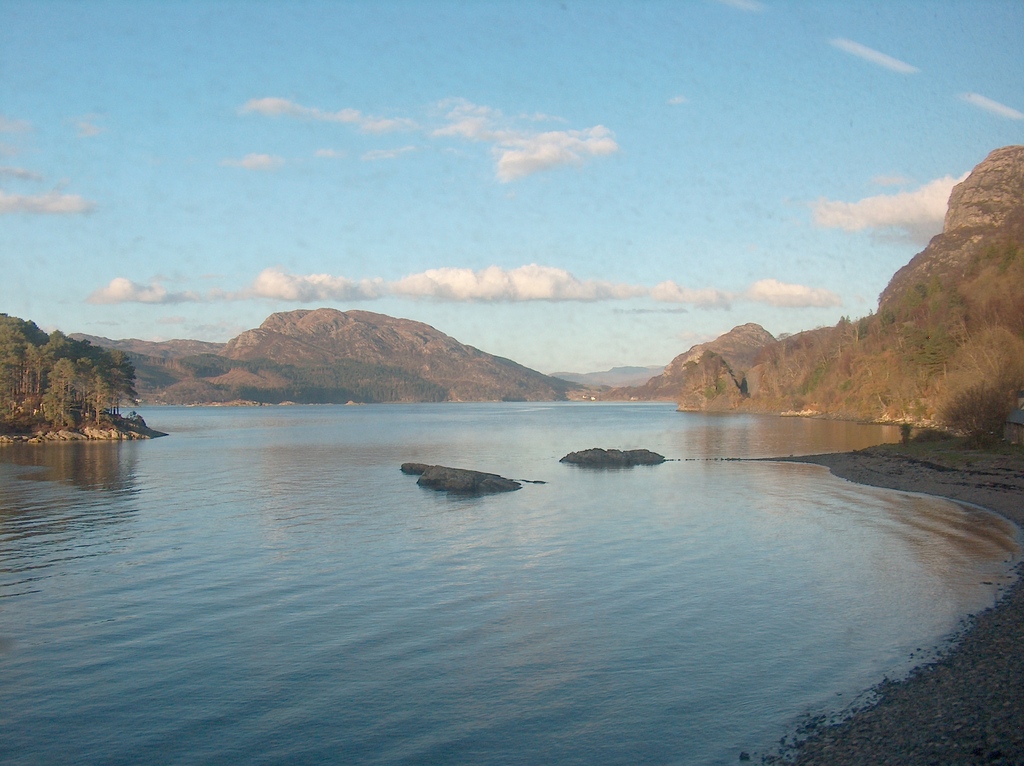
Loch Carron
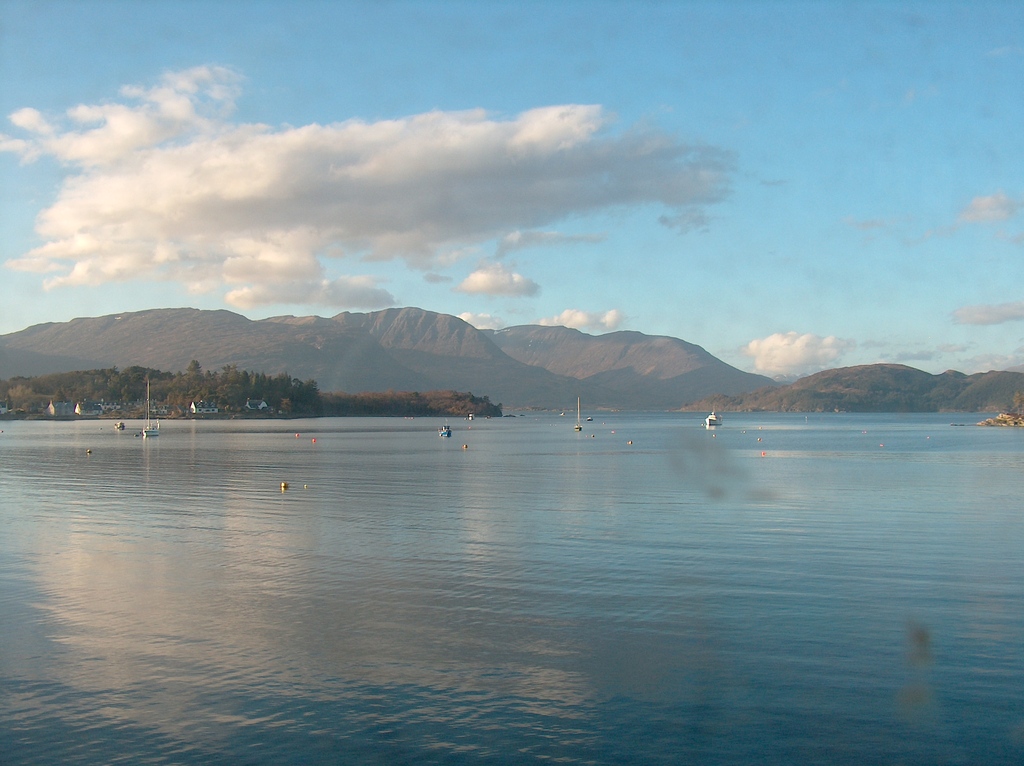
View of Plockton from around Duncraig
The next stop is the village of Plockton which is famous for its palm trees and of course its beautiful location on a sheltered bay. Surrounded by rugged hills and benefiting from the Gulf Stream flowing in to its waters, this Highland village really can grow tropical palm trees.
The railway station has been converted into self catering accommodation while next door a large building resembling an old signal box is in fact a backpackers’ hostel.
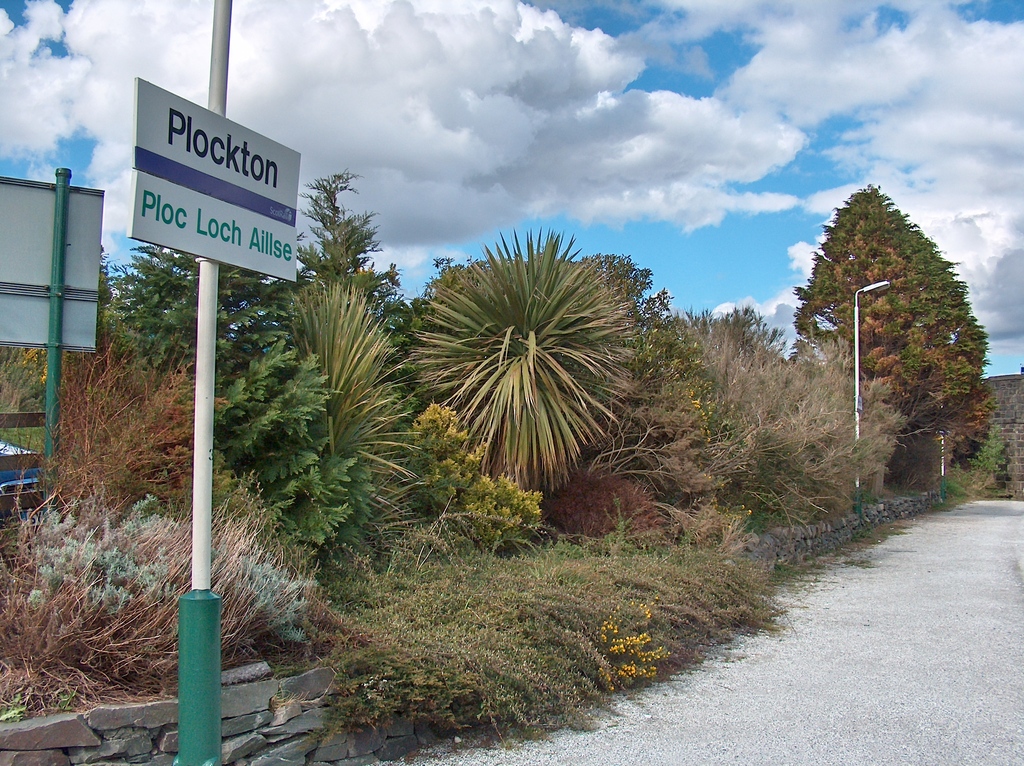
Palm trees at Plockton!
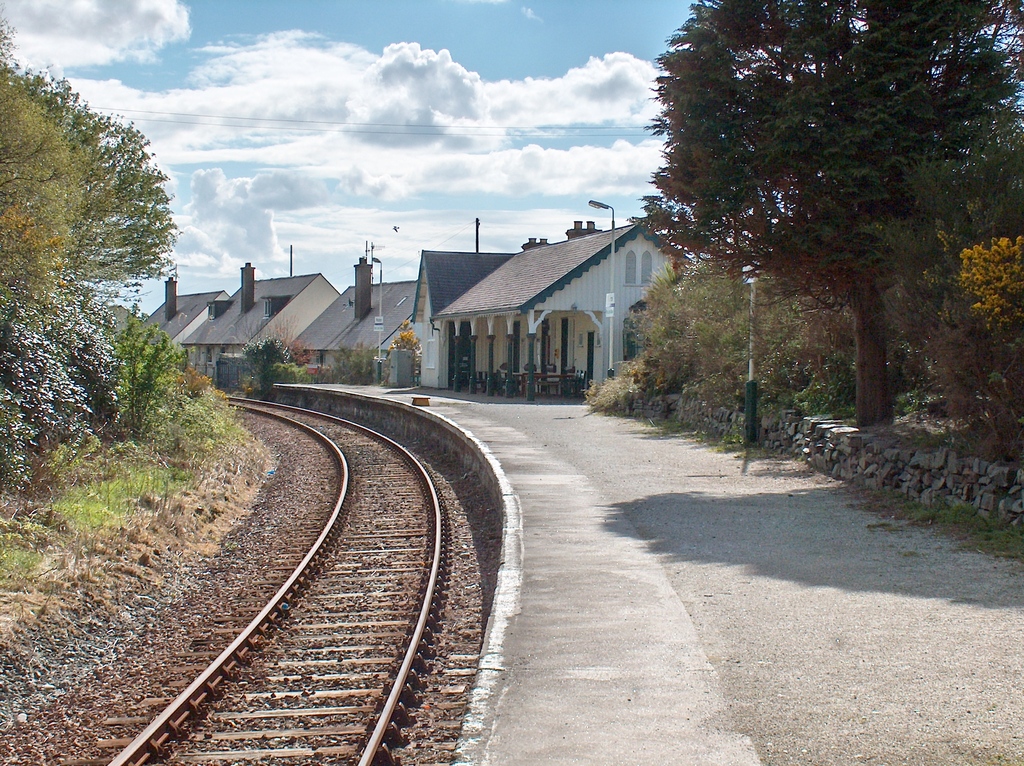
Attractive Plockton station
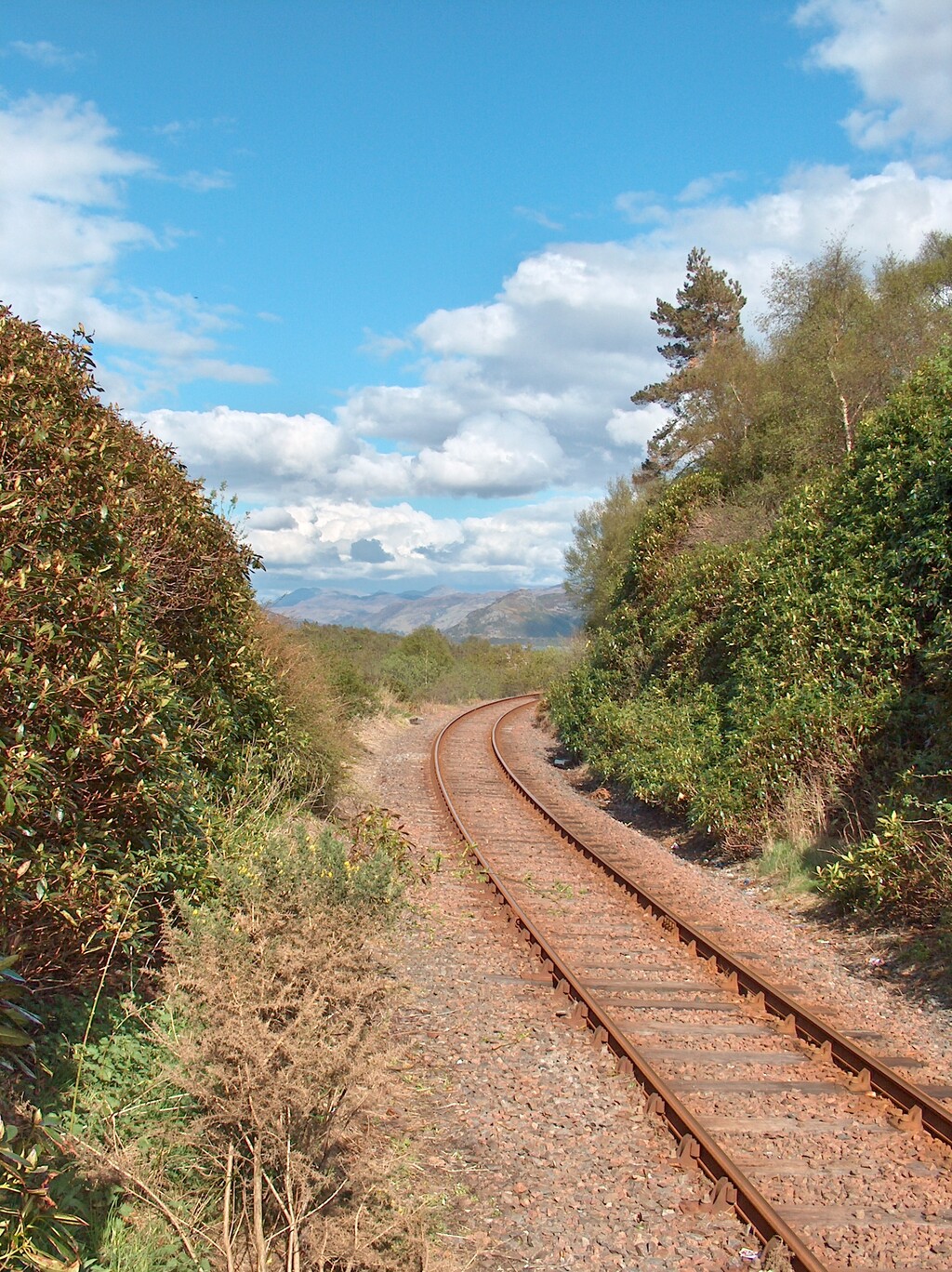
Looking east from Plockton railway station
The train continues beside the sea and makes a brief request stop at Duirinish before briefly heading south. Look out for the Skye bridge on the right hand side of the train.
There are spectacular views out to the Isles of Raasay, Scalpay, Longay, Pabay and Crowlin with seals sitting on the rocks. Kyle is now minutes away as the train heads through a steep rock cutting.
The train heads through a cutting in the rock and past the old Kyle signal box (now disused) and onto the platforms at Kyle. The station at Kyle is unusual in that it is actually built on top of the harbour.
Steamers in the past departed from the train side. It is a pleasant two platform station with central building.
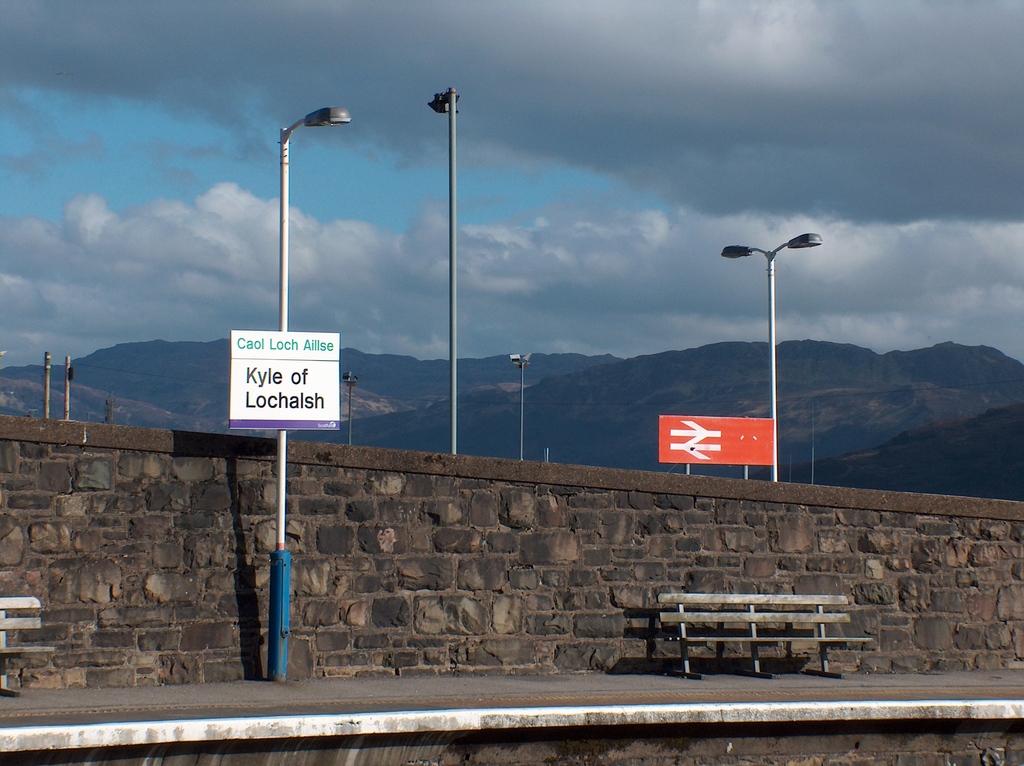
Platform at Kyle of Lochalsh station
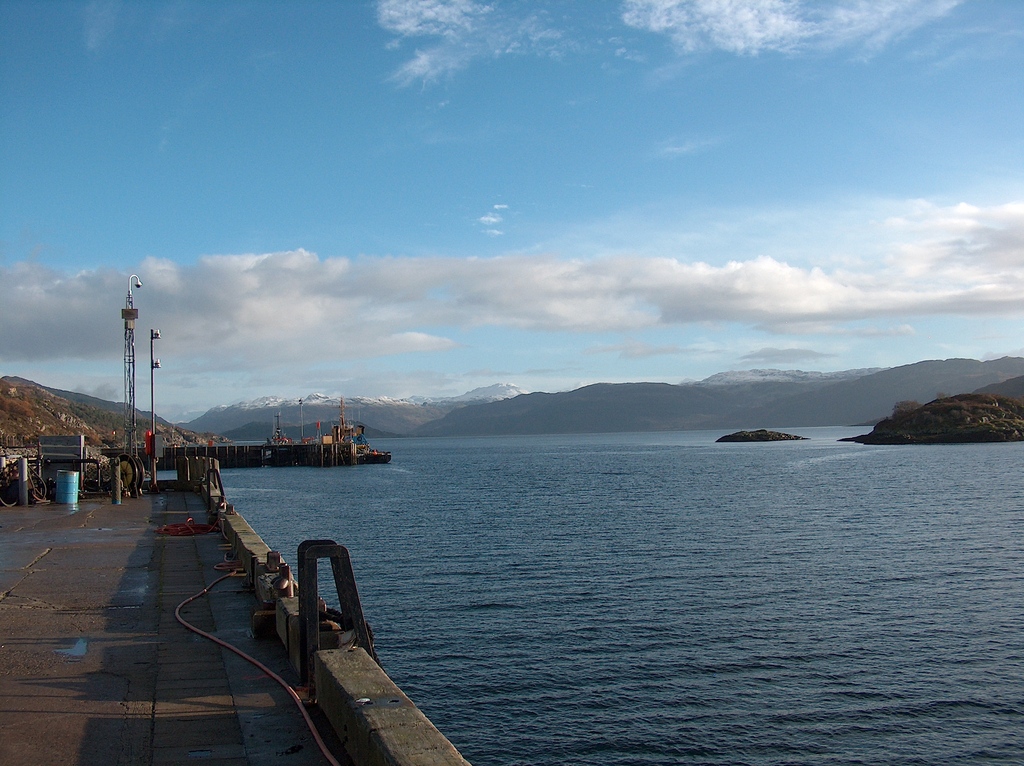
View from Kyle of Lochalsh Harbour
Page last updated 29 September 2025